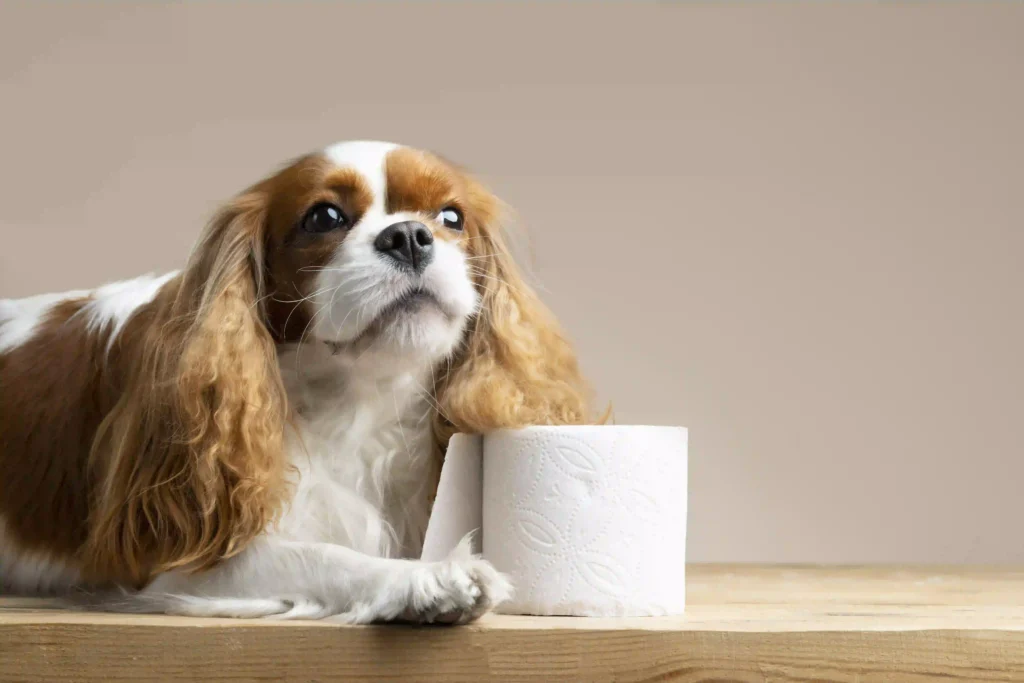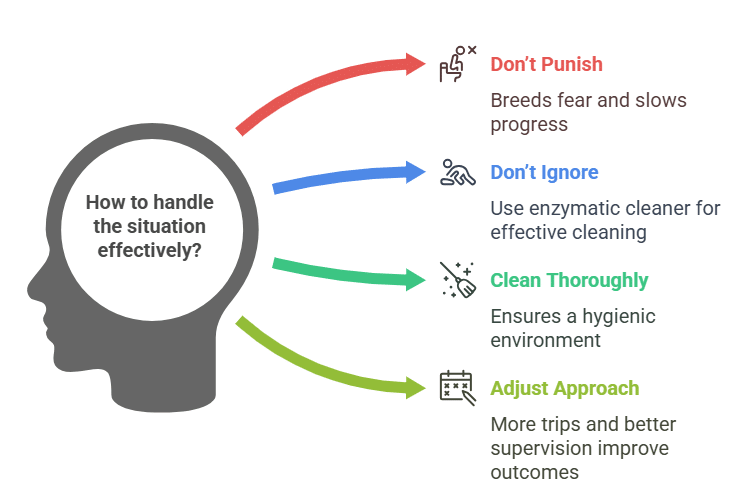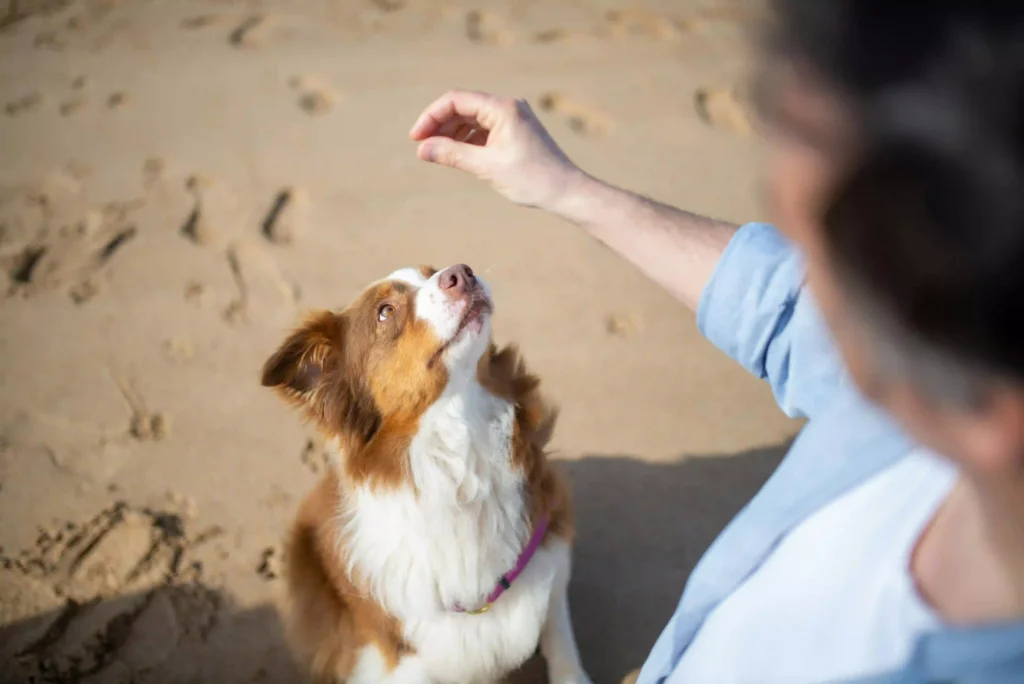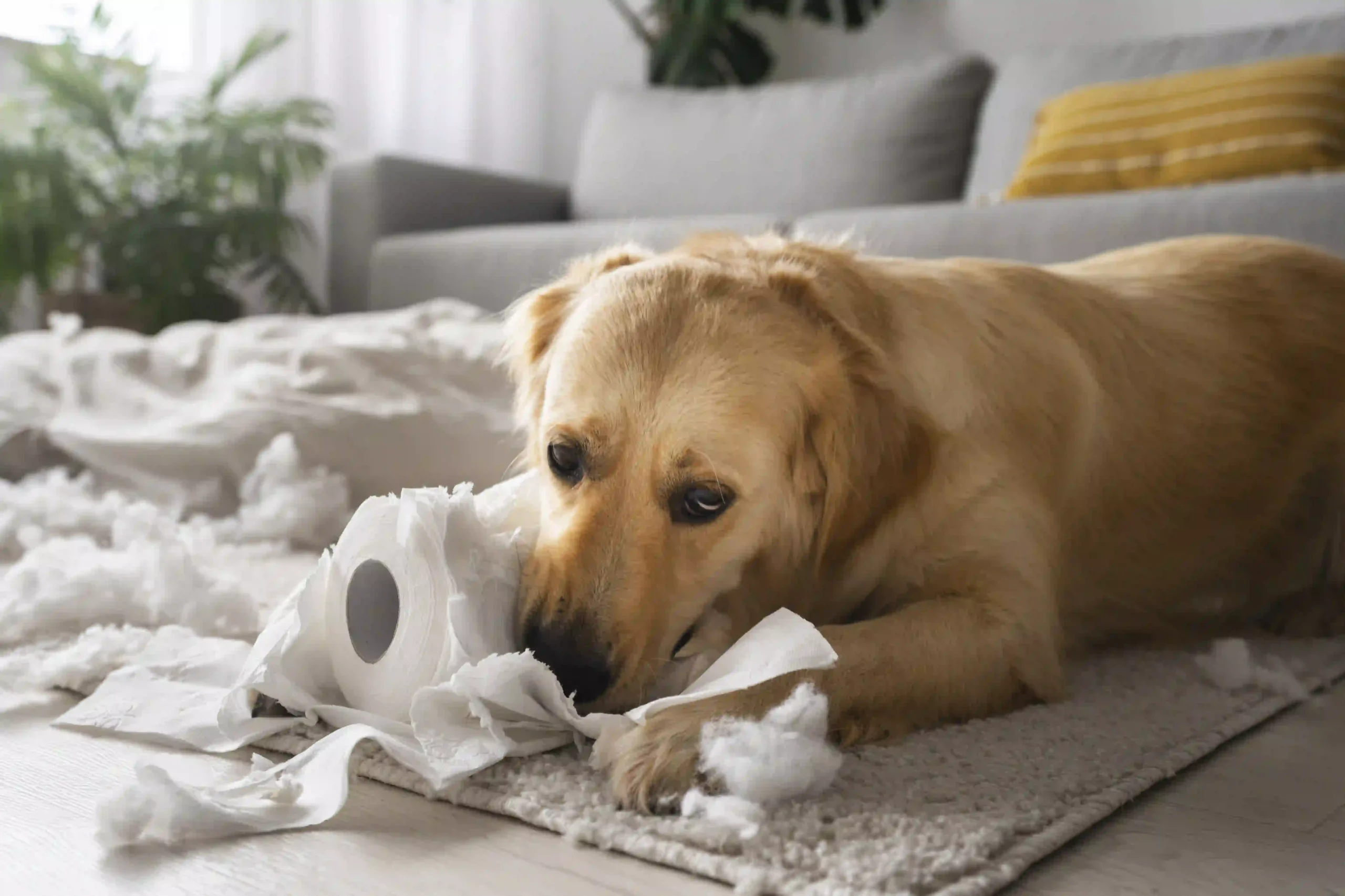Written By Dr Pam, Certified Professional Dog Trainer (CPDT-KA) with 8+ years of experience in puppy behavior. Reviewed by Dr. Masoud Onsori, DVM, of the American Veterinary Medical Association (AVMA).
Every new puppy parent faces the adventure of house training. Potty training a puppy takes patience, consistency, and a clear plan—but the payoff is a cleaner home and a confident, well-behaved companion.
This guide breaks down how to potty train a puppy with expert-backed steps, realistic timelines, and tips to avoid common pitfalls.
Let’s dive into creating a stress-free routine for you and your pup!
This guide provides a detailed, step-by-step approach on how to potty train a puppy successfully.
Why Potty Training Your Puppy Matters
Potty training is about more than just keeping your home clean—it’s essential for your dog’s confidence, well-being, and relationship with you.
A well-trained dog understands where and when to relieve themselves, reducing stress and strengthening trust.
“Puppies under 8 weeks often need hourly breaks due to limited bladder control. After that, use the ‘age in months + 1’ rule as a guide—e.g., a 3-month-old can hold it for about 4 hours—but adjust for small breeds with smaller bladders.”
How to Potty Train a Puppy with Frequent Breaks
Understanding Puppy Bladder Control
Puppies have tiny bladders, so frequent potty breaks are non-negotiable.
A good rule of thumb is one hour per month of age, plus one (e.g., a 4-month-old can wait about 5 hours).
To prevent accidents, take your puppy outside at these key times:
-
- First thing in the morning
- Immediately after meals
- After naps
- After playtime
- Right before bedtime
In the early weeks, plan a nighttime break too.
Sticking to this schedule speeds up house training and sets your pup up for success.
Real Puppy Parent Insights
Many owners wonder when accidents will stop. Kyros, a puppy parent, shared:
“I’m curious when other people’s puppies stopped having regular indoor accidents. Juno is 14 weeks and has had a 3.5-day streak with no mishaps—am I nearing the end, or is this just luck?”
Answer: Every puppy varies, but consistent streaks signal progress! Full reliability often takes 4–6 months.
Using a Leash and Spot for House Training Success
Why a Leash Helps
Even in a fenced yard, a leash keeps your puppy focused during potty breaks. It minimizes distractions like chasing squirrels and ties the designated spot to the task.
Picking the Perfect Potty Spot
Take your pup to the same spot every time.
Familiar scents reinforce the habit, making it clear this is for potty—not play. This routine is a game-changer in how to potty train a puppy effectively
Why It Works:
2025’s Easiest Way to Stop Leash Pulling

Positive Reinforcement in Puppy Potty Training
How to Reward Effectively:
- Use praise and a small, high-value treat – Try soft options like cooked chicken or commercial treats.
- Stay consistent – Reward right after they finish to build the connection.
- Avoid overstimulation at night – Keep late-night breaks calm to help them settle back to sleep.
“High-value treats like freeze-dried liver can be highly motivating—research shows they’re often more effective than kibble for training,” says Dr. Pam, citing trends from canine behavior studies (e.g., Journal of Veterinary Behavior, 2022).
Spotting Potty Signals Early
Puppies signal when they need to go—you just need to spot the cues!
Catching these early prevents accidents and reinforces good habits.
Common Puppy Cues:
Puppies give clues when they need to go—catch them early to avoid messes! Watch for
- Circling or restless pacing – They’re searching for a spot.
- Sniffing the floor – Checking for past potty areas.
- Squatting suddenly – A last-second alert!
- Whining, barking, or scratching at the door – Vocal pups may alert you.
What to Do:
Take them to their potty spot immediately. If an accident happens, clean thoroughly with an enzymatic cleaner (not regular ones) to remove odors and deter repeats.
Common Mistake:
“Owners often miss subtle cues like sniffing. Track patterns with a potty log app like Pupford,” advises Dr. Pam.
AKC Guidelines:
-
- Crate size: Enough to turn around, not enough to roam.
- Max crate time: 2–3 hours for puppies under 6 months.
Crate Training: A Natural Boost for Potty Training
Crate training leverages a dog’s instinct to keep their sleeping area clean, making it a powerful house-training tool when used correctly.
How Crates Work
Crate training taps into a dog’s instinct to keep their den clean.
The right size—big enough to stand and turn, but not so large they can potty in a corner—encourages bladder control.
Limit crate time to 2–3 hours for pups under 6 months, aligning with their “age + 1” capacity.
Making the Crate a Happy Place
Introduce the crate slowly with treats and a cozy bed. Start with short sessions and build up.
A positive crate experience speeds up how to potty train a puppy.

Potty Training Timelines: What to Expect
Some guides promise potty training in 3–7 days.
While these can kickstart habits, full reliability takes longer—every puppy learns at their own pace.
Can You Potty Train in 3 Days?
A 3-day plan works best with constant supervision (ideal for stay-at-home owners):
- Limit indoor freedom
- Take them out every 30–60 minutes
- Reward every success
- Minimize accidents with a strict routine
Reality Check: This builds initial habits, but full control takes weeks to months.
What About a 7-Day Plan?
A 7-day approach is more flexible yet consistent:
- Days 1–3: Set a routine, use a leash, reward instantly.
- Days 4–5: Spot signals, reduce accidents.
- Days 6–7: Extend break intervals as control improves.
Small breeds may need longer. Research (Journal of Veterinary Behavior) suggests full house training averages 4–6 months, depending on consistency and breed.
Handling Accidents Like a Pro
Accidents are normal—stay patient and proactive, not frustrated.
What NOT to Do:
- Don’t punish – It breeds fear and slows progress.
- Don’t ignore – Clean with an enzymatic cleaner (e.g., Rocco & Roxie).
What TO Do:
- Clean thoroughly.
- Adjust your approach – More trips, better supervision.

Trust-Building Tip:
Punishment raises anxiety (AVMA, 2023). Focus on prevention and praise.
Example:
“A client’s Dachshund hated rain. With an umbrella and treats, we saw progress in days—patience paid off!”
Diet and Hydration: Hidden Keys to Success
A puppy’s diet and water intake shape their potty schedule, affecting frequency and consistency.
Food & Water Basics
A quality diet means:
- Fewer accidents
- Predictable breaks
- Healthier stools
Best Practices:
- Set feeding times – Routine aids potty timing.
- Monitor water – Limit excess before bed, but keep it available daily.
- Pick digestible food – High-protein formulas reduce issues.
Vet Tip:
“Sudden diarrhea? Transition food over 7 days. If it persists, check for parasites,” says Dr. Adam Cherry, DVM.
When to Worry
- Diarrhea: Could signal diet issues or illness (e.g., parvovirus)—call a vet if severe or bloody, don’t wait 24 hours.
- Constipation: Check hydration or fiber.

Long-Term Habits for a Well-Trained Pup
Potty training is ongoing—reinforce habits to prevent relapses.
Maintaining Routine
- Stick to schedules.
- Adjust for changes (e.g., travel).
- Watch for cues.
Pro Tip: Teach a bell or verbal cue for communication!
Expert Warning:
“Stress (e.g., moving) can cause setbacks. Revert to basics for 1–2 weeks,” says Frania Shelley-Grielen.
Potty Training Adult Dogs
Adult dogs may need retraining due to habits or health:
- Limit freedom, use a leash indoors, reward success.
- Check for issues (e.g., UTIs) if accidents spike.
Final Thoughts: Mastering How to Potty Train a Puppy
Potty training is a bonding journey that builds trust and communication.
With consistency, patience, and these steps, you’ll raise a pup with lifelong good habits.
Got questions? Drop them below or join our community for more tips!
For persistent issues, consult a Certified Professional Dog Trainer (CPDT) or your veterinarian.
FAQ
Q: How long does it REALLY take?
A: 4–6 months on average (AVMA), but some breeds like Poodles learn faster.Q: Are pee pads a good idea?
A: For high-rise apartments, yes—but transition outdoors by moving pads closer to the door weekly.
